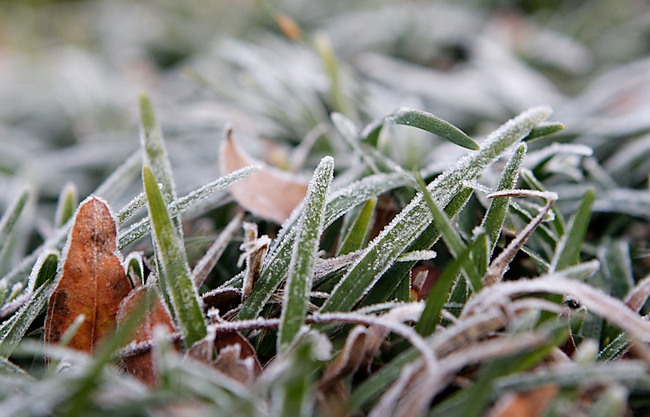Baby, It's Cold Outside
Is it a frost or a freeze? Honestly, it really does not matter. It is cold! But just in case you are curious, the difference is technical and meteorological.
A freeze (also called an advective freeze) occurs when a mass of cold air brings freezing temperatures into the area. For us, that normally means arctic air coming down from the Gulf of Alaska. It is usually cloudy and windy during a freeze.
A frost (also called a radiation frost) occurs under clear skies with wind less than five miles per hour which allow a temperature inversion to form near the ground where the temperature drops to freezing. Normally the temperature increases with altitude as you leave the ground. An inversion occurs when the temperature above the ground begins to cool at increasing height. If the air is very dry during a frost, no ice forms and it is called a black frost. A white frost forms when the air is holding water that condenses and freezes on surfaces forming ice.
Plants do not care why it is cold and the damage freezing temperatures cause depends on the species and age of the of plant and the amount of time it is exposed to the cold temperature. Severely frozen citrus may drop off the tree while less affected fruit may look normal but be dried out inside. Tender growth on unprotected flowering plants may turn black once thawed and bamboo (Bambusa spp.) leaves may desiccate and fall off. Other plants such as mondo grass (Ophiopogon japonicus) may be completely undamaged.
If a plant is damaged, the best advice is to wait until spring before pruning out the dead material. Pruning now may lead to further damage from later frosts since damaged branches and leaves may provide some protection. Be patient and let new growth on the plant show you where to prune so you do not cut back too much. The last frost in our area is normally around the third week in March, but Mother Nature can be unpredictable!
For more information on protecting your plants from freezing weather, visit the UC Integrated Pest Management website http://www.ipm.ucdavis.edu/PMG/GARDEN/ENVIRON/frostdamage.html. A search for “frost” on the UC IPM website will also help you find examples of frost damage to many types of plants including fruits and vegetables.

frosty mondo

